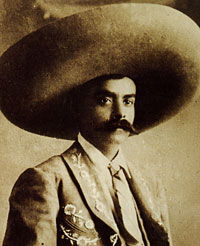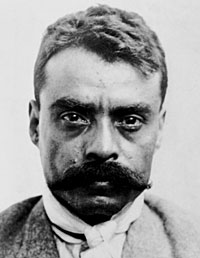
EMILIANO ZAPATA (1879–1919)
Deeply committed to the Amerindian philosophy of cherishing the land and zealous about keeping it in the hands of the native peoples, Emiliano Zapata became a staunch advocate of equal land rights and social justice. In the midst of the Mexican Revolution he authored the Plan de Ayala, adopting the slogan tierra y libertad, land and liberty. Born in 1879, Zapata began his life as a revolutionary in 1910 with a planned coup d'état against then Mexican dictator Porfirio Díaz. Zapata aligned his forces with Francisco I. Madero, who eventually assumed the presidency after Díaz was successfully deposed. Zapata became disenchanted with Madero when the president failed to fulfill promises pertaining to agrarian reforms. Victoriano Huerta, a supporter and former general under Porfirio Díaz, would later remove Madero from office. The new president enraged both the Zapatistas and other revolutionary militias, leading Zapata to instigate another coup.
Venustiano Carranza, then Secretary of War and the Navy, made an alliance with Zapata and other revolutionaries that eventually toppled the Huerta government. After Carranza assumed power, Zapata pleaded for the backing of the Plan de Ayala; nevertheless, Carranza and his delegates opted to create their own constitution and later placed a bounty on Zapata. On April 9, 1919, Emiliano Zapata was shot to death by one of his allies. Many of his campesino followers rejected reports of his death and insisted that Zapata had fled to the mountains where he still waits until they need him again. Murals by Diego Rivera, José Clemente Orozco, and the artists of the Taller de Gráfica Popular lifted Zapata's status to cultural icon through murals and other works of art.
